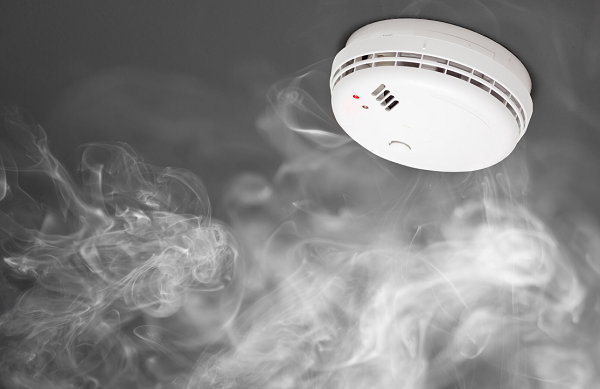
The changes to fire safety legislation in Scotland have led to a surge of interest in smoke, heat and carbon monoxide detectors. All Scottish homeowners must comply with the new standards by February 2022 to avoid any legal repercussions.
The legislation mentions various types of alarms and how they are required in specific quantities depending on the layout of your home. Alarms must also be interlinked according to the new legislation, which means connected either through wires or radio-frequencies.
In this article, we explore the various kinds of home fire safety technology available on the market, the differences between them and what the law requires you to do by the February deadline.
Interlinked Smoke Alarms
Smoke alarms sense smoke particles in the air as a means of detecting fire. If they detect a threat, interlinked smoke alarms send signals to each other, triggering each alarm connected to the system. This early warning gives you a chance to evacuate or safely extinguish the fire.
These alarm types are great for picking up fires in the first stages of their progression, and because they are interlinked, you will be notified of a fire downstairs even if you are upstairs.
Interlinked heat alarms
Heat alarms detect fires by detecting significant increases in temperature. They are commonly used in smokey areas, like kitchens, because they focus on heat and not smoke.
If you need interlinked heat detectors in Scotland, there are two types to be aware of:
Fixed temperature: These are the most popularly used type of heat detector and they are often used in residential homes and warehouses. They are programmed to trigger once a certain temperature threshold is breached, which is typically 58 degrees celsius. When a fire occurs, a heat sensitive piece of metal melts and sets off an alarm, alerting residents.
Rate-or-rise (ROR): ROR heat detectors work by measuring the rate at which the air temperature changes. The device employs an alarm when the rate of temperature rise crosses the rate which was fixed as the safe rate of temperature change per minute.
Interlinked heat detectors will alert you to fires that are liable to spread quickly to other rooms, ensuring that you and your family can react safely and efficiently.
Interlinked carbon monoxide detectors
Carbon monoxide is a tasteless and odourless gas and is extremely toxic in high concentrations. There are around 60 deaths each year from accidental carbon monoxide poisoning in England and Wales, so installing one in your home could potentially save your life.
According to the new legislation, you are required to install a carbon monoxide detector in each room where you have a carbon fuelled appliance such as a boiler, fire, heater or flue.
Interlinking your carbon monoxide detector ensures that you can react quickly to a breach in oxygen levels, regardless of the room it’s happening in.